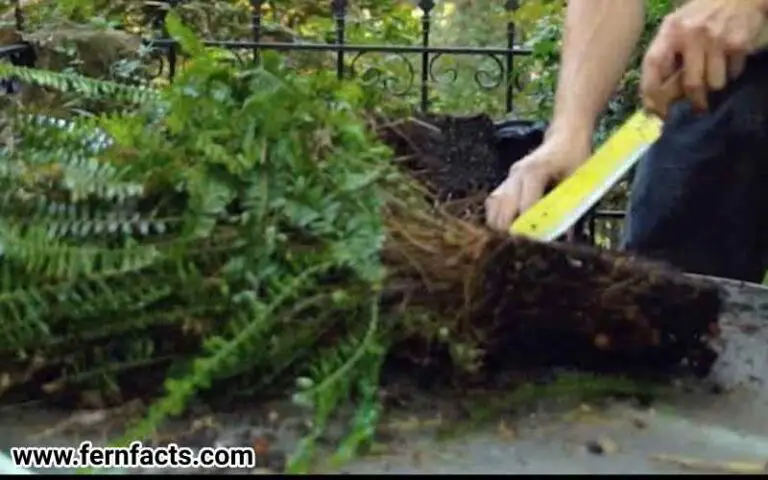How to Cut Back Outdoor Ferns
Are you a fern owner? Do you know when to cut back your ferns to get their robust growth? If not then follow this article rigorously.
Here I’ll try to illustrate what things you should consider before you are about to cut back your outdoor ferns.
In addition, I’ll also tell you when you can cut your ferns along with step-by-step guidelines to cut back your ferns. So stay tuned to this article.
What Should You Consider Before Cutting Back Ferns
There are some primary things you should consider before you are going to cut back your outdoor ferns. Here are those factors:
Identify Fern’s Species
Before you begin to cut back your fern, you need to examine what plant types your ferns are! Whether it’s an evergreen plant, semi-evergreen or deciduous. So at first identify their specific genre.
More or less, deciduous plants are easy to cut back as they are already beginning to lose their fronds before the winter seasons. In general deciduous plants begin to yellow and brown during autumn seasons.
So, they will automatically fall off during that time. Therefore they don’t need to cut back in winter. However, you can add a little mulch onto their soil surface to give an extra layer of protection from winter.
Now let’s talk about if your ferns are evergreen plants, then it’s a bit complicated as they remain evergreen for the whole year.
So you might get confused about which time you should cut back your evergreen ferns. However, mostly in late winter or early spring is the suitable time to cut back your evergreen ferns. Because it is their time for new growth.
Similarly, for your semi-evergreen fern, you can cut back those ferns before their fronds start to fall off.
Mostly at the end of the winter season or early spring season, they start to lose their fronds so you can consider cutting at those periods.
Check the Climate
Similarly, ferns are also very adaptable to the weather they are living in. So if you are living in a cooler environment, then your ferns’ humidity lover ferns might grow a little slower than their usual age.
Equivalently, if you are in hot weather conditions, then your ferns might grow invasively as well. So it’s better you always should check on their active growth foliage before cutting back their fronds.
When to Cut Back Your Ferns
In general, ferns should be cut back in the early spring or late winter seasons before their growing seasons begin.
Since new emerging growth will boost their development by sustaining their photosynthesis process.
Cut Back in the Autumn Seasons
There are some ferns that you can cut back in the autumn seasons. Like:
- Maidenhair ferns (Adiantum)
- lady-ferns (Athyrium)
- Cystopteris (bladder ferns or fragile ferns)
- Deparia (Sleepworts Ferns)
- Wood ferns/male ferns (Dryopteris)
- glade ferns (Homalosorus pycnocarpos)
- Oriental Ostrich ferns (Matteuccia orientalis)
- Marsh ferns/Western marsh ferns (Thelypteris palustris)
all varieties can be cut back in that time frame.
Cut Back in the Late Winter Seasons
Now, there are some varieties that need to cut back during the later winter seasons before their new growth begins. Likewise,
- Hard ferns (Blechnum),
- Holly ferns or Japanese holly ferns (Cyrtomium falcatum),
- Scaly Male Ferns/ Golden Scaled Male Ferns (Dryopteris affinis),
- the alpine buckler fern (Dryopteris expansa),
- Christmas Ferns (Polystichum Acrostichoides),
- Hard-shield ferns (Polystichum aculeatum) etc.
Cut Back in the Late Spring or Early Summer Seasons
Further, there are some fern varieties out there that need to be cut back in the late spring to early summer time period.
For instance, Licorice ferns/ many-footed ferns (Polypodium glycyrrhiza), polypody ferns (Polypodium calirhiza), Southern polypody (Polypodium cambricum) etc.
Wait for New Growth to Come
Similarly, there are some varieties of ferns that you can wait for until their new growth emerges. On average, their growth will start to enhance during early spring or midsummer times.
So you can consider that time to cut back your ferns at that time. When you observe the new growth you can cut back those dead, damaged fronds.
For example, Autumn ferns/ Japanese shield ferns (Dryopteris erythrosora), Giant Chain ferns (Woodwardia fimbriata), Cretan brake ferns (Pteris cretica), etc.
How to Cut Back Outdoor Ferns
Now let’s move forward to our original theme of how you can cut back your outdoor ferns. After gathering all the knowledge about when and what to consider before the cutting process, you can finally proceed to your last mission of cutting back your outdoor ferns.
Here are the given steps that you should follow to cut back ferns.
Step 1: Collect Your Tools and Scissors
Firstly, take your pruning or cutting tools. You can simply use sharp scissors to cut your ferns.
Step 2: Sterilized Your Tools
Before cutting your ferns, you need to sterilize your tools. Otherwise, it might contain any bacterial infection to your healthy ferns.
For sterilizing, you can use any market-brand sanitizer to reduce all the bacterial infections.
Conversely, you can also use bleach solutions with a mixture of lukewarm water. Then gently wash all the tools with that water. Alternatively, you can also use alcohol pads to wipe the scissors that you are using.
Step 3: Cut Off Any Dead Branch
Now, finally use the scissors to cut back your ferns. Examine the whole plant thoroughly and find out any dead branches. Then simply cut back the dead branch near their roots.
Step 4: Cut Off Any Dead & Brown Fronds
Afterward, cut back those damaged, brown fronds right from their stems without hurting any new ingrown fronds.
Step 5: Cut Off Any Unhealthy or Diseases Fronds
If you observe any unhealthy or diseased fronds because of pest infection, then cut those fronds as well.
Because those fronds might be contagious to other fronds and might spread the disease to other healthy fronds. Ultimately, your whole fern plant will be infected.
That’s why cut back on unhealthy foods and treat your plants with good pesticides.
Closing Lines
To briefly paraphrase, ferns are one of the elegant looking ferns for gardeners to have in their garden. To understand their species genre, their characteristics, and climate conditions you have to utilize their cutting period.
On average, you can choose from late winter to early summer before their growing seasons start. However, there are also variations that vary from species to species.
By following those easy guidelines, I hope you can easily cut back your outdoor ferns in your house and give them a thriving life.







